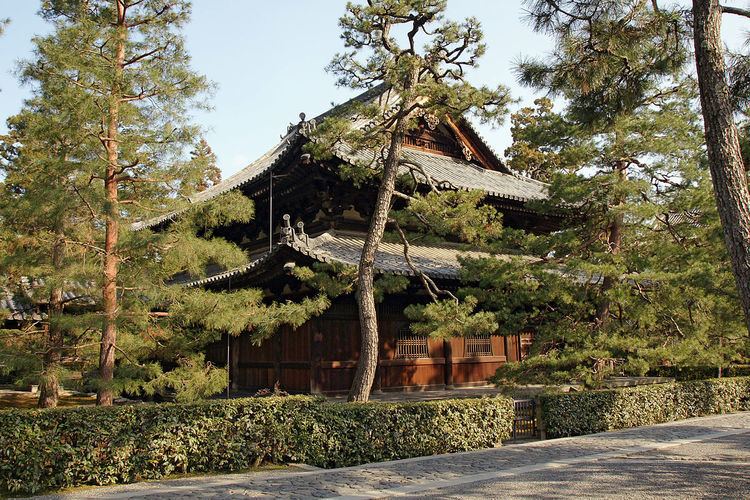Affiliation Rinzai Founder Daito Kokushi Opened 1326 | Completed 1326 Phone +81 75-491-0019 | |
 | ||
Address 53 Murasakino Daitokujicho, Kita Ward, Kyoto, Kyoto Prefecture 603-8231, Japan Burials Fumimaro Konoe, Konoe Motohiro, Ishida Masazumi Similar Kōtō‑in, Daisen‑in, Myōshin‑ji, Jukō‑in, Ryōan‑ji | ||
Buddha on the beach summer chill out daitoku ji phil thornton
Daitoku-ji (大徳寺, the ‘temple of Great Virtue’) is a Buddhist temple, one of fourteen autonomous branches of the Rinzai school of Japanese Zen. It is located in Kita-ku, Kyoto, Japan. The "mountain name" (sangō) by which it is known is Ryūhōzan (龍宝山). The Daitoku-ji temple complex today covers more than 23 hectares (57 acres).
Contents
- Buddha on the beach summer chill out daitoku ji phil thornton
- History
- Buildings
- Treasures
- Sub temples
- Shichid garan
- Tatch
- References
History
Daitoku-ji originated as a small monastery founded in 1315 or 1319 by the monk Shūhō Myōchō (宗峰妙超, also pronounced Sōhō Myōchō; 1282–1337), who is known by the title Daitō Kokushi ("National Teacher of the Great Lamp") given by Emperor Go-Daigo. In 1325, the monastery was converted into a supplication hall for the imperial court at the request of the retired Emperor Hanazono. The dedication ceremony for the imperial supplication hall, with its newly added dharma hall and abbot's living quarters, was held in 1326, and this is generally recognized as the true founding of the temple.
Like many other temples in Kyoto during that time, the temple's buildings were destroyed by fire. In 1474, which was when Kyoto was the scene of the Onin War, Emperor Go-Tsuchimikado designated Ikkyū Sōjun as the head priest. With the help of merchants of the city of Sakai, Ikkyū contributed significantly to the temple's rehabilitation.
From its earliest days, the temple experienced alternating periods of fortune and decline. This can be attributed to the rivalries and conflicts between Daitoku-ji and other well-known Zen temples, as well as between Daitoku-ji and the political authorities.
Daitoku-ji became particularly important from the sixteenth century, when it was predominantly supported by members of the military establishment, who sponsored the building of subsidiary temples as prayers for their ancestors or in preparation for their own demise. In 1582, Toyotomi Hideyoshi buried his predecessor, Oda Nobunaga, at Daitoku-ji. He also contributed land and built the Sōken-in.
Around this period in history, Daitoku-ji became closely linked to the master of the Japanese tea ceremony, Sen no Rikyū, and consequently to the realm of the Japanese tea ceremony. After the era of Sen no Rikyū, another famous figure in the history of the Japanese tea ceremony who left his mark at this temple was Kobori Enshū.
Buildings
There are several buildings in the complex:
Treasures
Daitoku-ji is home to some works by the 13th-century Chinese artist-monk Mu Qi:
Sub-temples
Daitoku-ji operates some twenty-two sub-temples, the most significant being Daisen-in, Jukō-in (聚光院), and Shinjū-an (眞珠庵).
Shichidō garan
The garan (compound):
Tatchū
The tatchū (塔中, inner cloisters):
